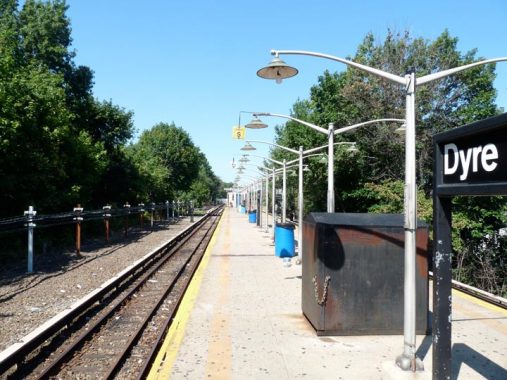
When conceived, it was assumed that the former New York, Westchester and Boston RR would eventually reach Boston, but instead at its lengthiest, it ran from southern Mott Haven in the Bronx to two terminals in Westchester County, at White Plains and at Port Chester. Originally conceived in 1872, it was delayed for a few decades by the Panic of 1873, essentially a depression. Once emerging from receivership in the early 1900s, the railroad began construction in 1906 and built north, with the northernmost stations at Rye and Port Chester opening in 1928 and 1929. When most stations opened in 1912, the NYW&B was considered state of the art for its time, taking power from overhead lines, no grade crossings, high platforms to enable comfortable boarding, and spacious, architecturally attractive ticket offices/station houses.
Despite its advantages, the NYW&B was not a success. When it opened, the automobile industry was beginning to take off — by the 1920s, scenic parkways had appeared to handle intracity auto traffic, and the NYW&B could not really compete as a commuter railroad because it ended its run in Mott Haven and riders had to detrain and switch to the Third Avenue El to get to Manhattan. It soldiered on for a decade, but finally declared bankruptcy in 1937, ending service.
But all was not lost. The City of New York saw a golden opportunity to expand service into Pelham Gardens and Eastchester, and purchased the NYW&B right of way, stations, and tracks. After making modifications like adding a third rail, the NYW&B became the Dyre Avenue Shuttle in 1940, and after new tracks were installed to connect it with the White Plains Road el in the 1950s, the full-fledged Dyre Avenue Line, today the home of the #5 train.
In early April 2012 I walked the route, or the closest possible approximation along the tracks, from the Bronx Park East station all the way northeast to Dyre Avenue. It gave me a chance to traverse the Pelham Gardens and Eastchester sections of the Bronx, which I’m in just a few times per year, and to approach both the subway route and the neighborhoods it travels through with a fresh perspective.
Here’s the last stop on the line at Dyre Avenue. In 2012 it still boasted its 1950s-era lamp stanchions with incandescent lighting, but they have been replaced with twin T-shaped LED light poles.
As always, “comment…as you see fit.” I earn a small payment when you click on any ad on the site.
5/14/21
